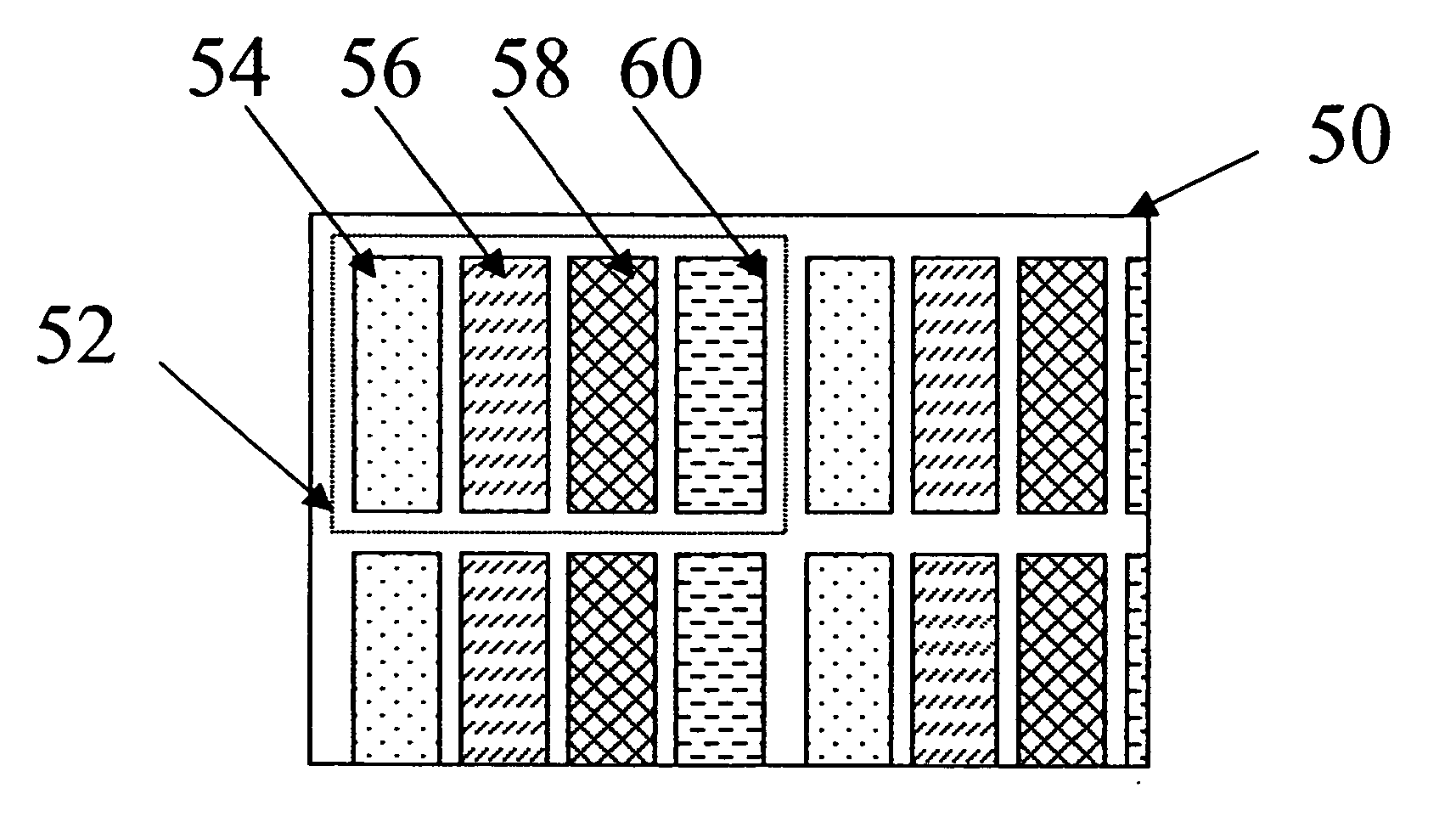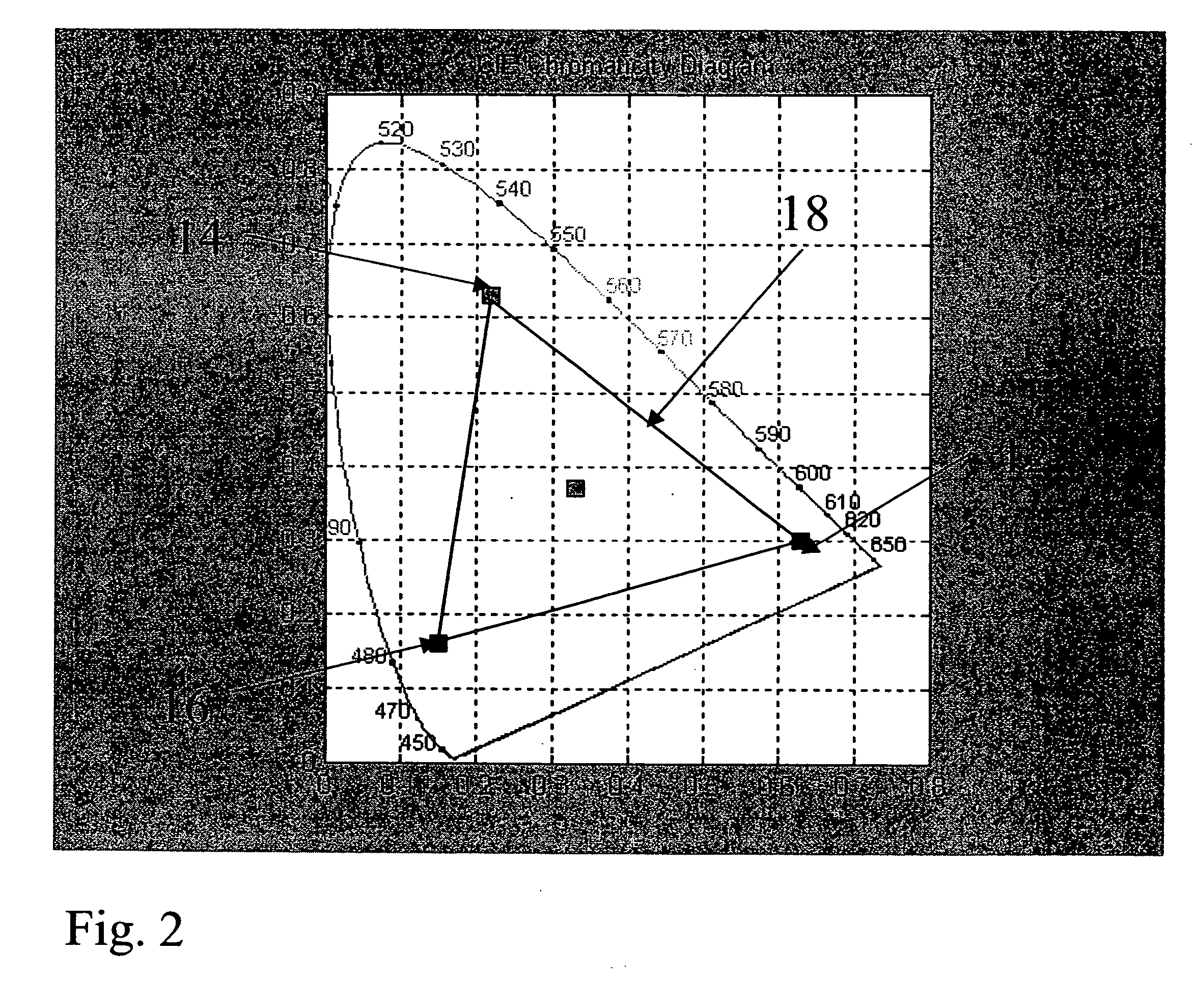Color OLED display with improved power efficiency
a technology of oled display and power efficiency, which is applied in the field of oled display devices with fullcolor, can solve the problems of insufficient display time, inability to meet the needs of users, so as to reduce overall power consumption, prolong the life of the display, and improve the luminance efficiency. the effect of luminance stability
- Summary
- Abstract
- Description
- Claims
- Application Information
AI Technical Summary
Benefits of technology
Problems solved by technology
Method used
Image
Examples
Embodiment Construction
[0034] The present invention is directed to a full-color display device having a red, green, and blue OLED with one or more additional OLEDs that expand the color gamut, wherein the one or more additional OLEDs have a higher luminance efficiency or luminance stability over time than at least one of the red, green or blue OLEDs. A signal processor associated with the display converts a standard three-color image signal to drive signals that drive the OLEDs in a way as to reduce the power consumption of the display or extend the lifetime of the display as compared to the same display when all colors are formed using only the red, green, and blue OLEDs, while maintaining display color accuracy. This conversion process may be adjusted in response to use or display conditions.
[0035] The additional OLED is ideally positioned within the CIE chromaticity space such that its use may replace a less efficient OLED when forming a color at or near the white point of the display. By meeting this...
PUM
 Login to View More
Login to View More Abstract
Description
Claims
Application Information
 Login to View More
Login to View More - R&D
- Intellectual Property
- Life Sciences
- Materials
- Tech Scout
- Unparalleled Data Quality
- Higher Quality Content
- 60% Fewer Hallucinations
Browse by: Latest US Patents, China's latest patents, Technical Efficacy Thesaurus, Application Domain, Technology Topic, Popular Technical Reports.
© 2025 PatSnap. All rights reserved.Legal|Privacy policy|Modern Slavery Act Transparency Statement|Sitemap|About US| Contact US: help@patsnap.com



